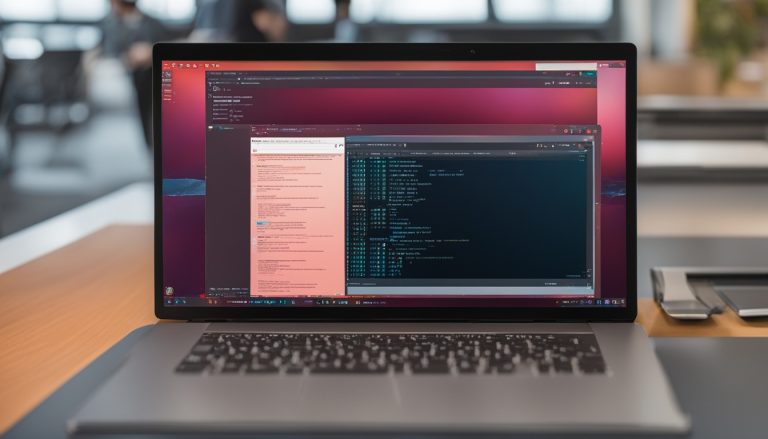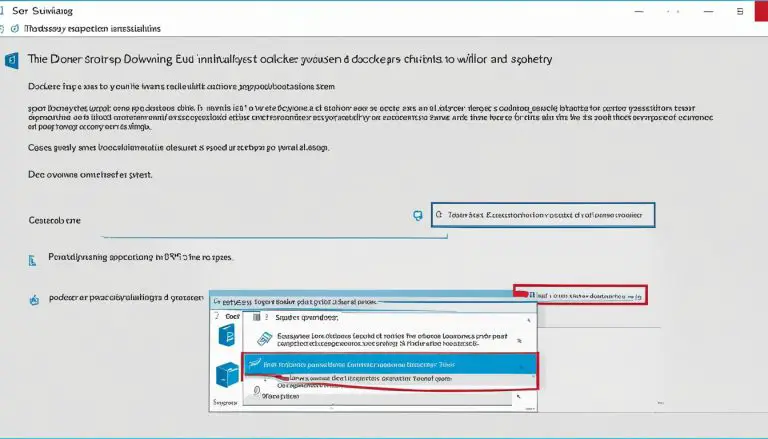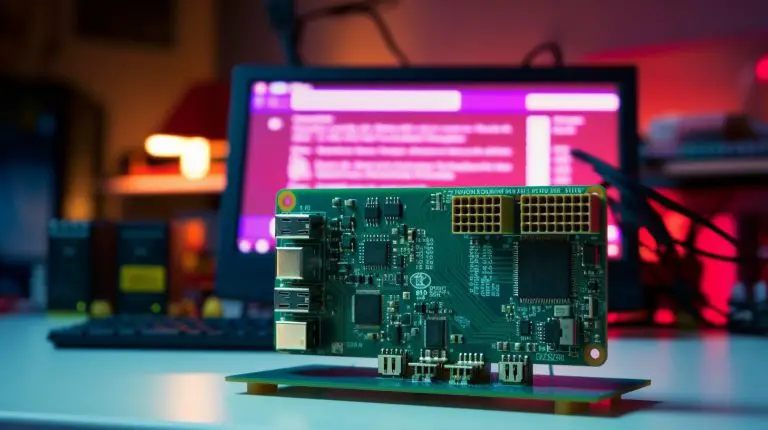Step-by-Step Guide: How to Connect Raspberry Pi with a Laptop
Connecting a Raspberry Pi to a laptop can be a convenient way to access and control the Pi remotely without the need for a separate monitor, keyboard, and mouse. By following the step-by-step guide below, you can easily establish a connection between your Raspberry Pi and a laptop, allowing you to utilize the Pi’s capabilities wirelessly.
Key Takeaways:
- Connecting a Raspberry Pi to a laptop provides a convenient and wireless way to utilize the Pi’s capabilities
- No need for additional peripherals like a monitor, keyboard, or mouse
- Establish a connection between your Pi and laptop for seamless access and control
- Follow the step-by-step guide for a successful setup process
- Optimize Raspberry Pi performance to enhance its capabilities
Working of the Setup
When connecting a Raspberry Pi to a laptop, there are two main methods: WiFi and Ethernet. While Ethernet provides a reliable wired connection, WiFi offers the flexibility of a wireless setup. To establish a WiFi connection, one of the most trusted applications is the VNC server, which allows remote access to the Raspberry Pi’s desktop from anywhere in the house.
With the VNC server, users can view the Pi’s desktop and control its functions, making it an ideal choice for screen sharing and remote control. This wireless connection eliminates the need for additional peripherals, such as a separate monitor, keyboard, and mouse.
“The VNC server enables seamless access to the Raspberry Pi’s capabilities without the hassle of extra cables and devices.”
Additionally, the Raspberry Pi can be connected to a laptop using an SSH (Secure Shell) connection. SSH allows users to access the Pi’s command line interface remotely, making it convenient for executing commands and managing the Pi’s settings without a physical connection.
By understanding the working of the setup, including WiFi and SSH connections, users can make the most of their Raspberry Pi and enjoy a convenient and wireless computing experience.
Prerequisites for the Setup
Before you can connect your Raspberry Pi to a laptop, there are a few prerequisites that you need to meet. These include:
- A Raspberry Pi board: You will need a Raspberry Pi board, such as the Raspberry Pi 4, to establish the connection.
- A stable WiFi connection: Make sure you have a stable WiFi connection on both your laptop and the Raspberry Pi. This will ensure a smooth and uninterrupted connection.
- A laptop: You will obviously need a laptop to connect to the Raspberry Pi. Any laptop with a WiFi capability will do.
- An SD card with Raspbian OS: The Raspberry Pi runs on Raspbian OS, so you will need to have an SD card with the Raspbian OS installed. This will serve as the operating system for your Raspberry Pi.
Once you have these prerequisites in place, you can proceed with the setup process and establish a connection between your Raspberry Pi and your laptop.
In order to connect your Raspberry Pi to your laptop, make sure you have a Raspberry Pi board, a stable WiFi connection, a laptop, and an SD card with the Raspbian OS installed.
Step-by-Step Guide to Connect Raspberry Pi to Laptop
Connecting a Raspberry Pi to a laptop is a straightforward process that can be achieved by following these steps:
Step 1: Prepare your Raspberry Pi
Ensure that your Raspberry Pi is powered off and properly connected to a stable power source. Connect the Raspberry Pi to your laptop using an Ethernet cable, or make sure you have a reliable Wi-Fi connection.
Step 2: Enable SSH
To establish a remote connection with your Raspberry Pi, you’ll need to enable SSH (Secure Shell). To do this, open the terminal on your laptop and enter the following command:
sudo raspi-config
Navigate to the “Interfacing Options” menu and select “SSH”. Follow the prompts to enable SSH on your Raspberry Pi.
Step 3: Find the IP Address of your Raspberry Pi
Once SSH is enabled, you’ll need to find the IP address of your Raspberry Pi. Open the terminal on your laptop and enter the following command:
sudo ifconfig
Look for the “inet” address associated with the network interface connected to your Raspberry Pi. This is the IP address you’ll use to establish the remote connection.
Step 4: Connect to Raspberry Pi using SSH
To connect to your Raspberry Pi, open the terminal on your laptop and enter the following command:
ssh pi@your_pi_ip_address
Replace your_pi_ip_address with the IP address obtained in Step 3. You’ll be prompted to enter the password for your Raspberry Pi (default is “raspberry”). Once authenticated, you’ll have remote access to your Raspberry Pi.
Step 5: Explore and Control Raspberry Pi
With the SSH connection established, you can now explore and control your Raspberry Pi from your laptop. Use commands in the terminal to navigate the Pi’s file system, install software, and execute various tasks.
Remember to properly power off your Raspberry Pi and terminate the SSH connection when you’re done.
| Step | Description |
|---|---|
| Step 1 | Prepare your Raspberry Pi |
| Step 2 | Enable SSH |
| Step 3 | Find the IP Address of your Raspberry Pi |
| Step 4 | Connect to Raspberry Pi using SSH |
| Step 5 | Explore and Control Raspberry Pi |
Tips for Optimizing Raspberry Pi Performance
Optimizing the performance of your Raspberry Pi is essential to ensure smooth and efficient operation. Here are some tips to help you get the most out of your device:
1. Update the Software
Regularly updating the software on your Raspberry Pi is crucial for optimal performance. This ensures that you have the latest bug fixes, security patches, and improvements. To update the software, open the Terminal and enter the following commands:
sudo apt-get update
sudo apt-get upgrade
2. Manage Background Processes
Background processes can consume valuable system resources and slow down your Raspberry Pi. Identify and manage unnecessary background processes to free up memory and CPU usage. You can use the htop command in the Terminal to monitor and kill unwanted processes:
sudo apt-get install htop
htop
3. Optimize Power Settings
Adjusting power settings can significantly improve the performance of your Raspberry Pi. To optimize power settings, access the Raspberry Pi Configuration menu by entering the following command in the Terminal:
sudo raspi-config
From the menu, navigate to “Performance Options” and select the appropriate option based on your usage requirements. Choosing “High Performance” can enhance the Pi’s speed, while “Balanced” can strike a balance between performance and power consumption.
4. Utilize Overclocking
If you require additional processing power, overclocking your Raspberry Pi can provide a performance boost. However, note that overclocking may increase power consumption and generate more heat. To overclock your Pi, access the Raspberry Pi Configuration menu and select “Overclock”. Choose a suitable overclocking option based on your needs and ensure proper cooling to prevent overheating.
By following these tips, you can optimize the performance of your Raspberry Pi and enhance its capabilities. Remember to regularly maintain and update your device to ensure smooth operation and efficient functionality.
| Tips for Optimizing Raspberry Pi Performance |
|---|
| Update the Software Regularly update the software on your Raspberry Pi to ensure you have the latest bug fixes, security patches, and improvements. |
| Manage Background Processes Identify and manage unnecessary background processes to free up memory and CPU usage. |
| Optimize Power Settings Adjust power settings to strike a balance between performance and power consumption. |
| Utilize Overclocking If you require additional processing power, consider overclocking your Raspberry Pi, but ensure proper cooling to prevent overheating. |
Conclusion
Connecting a Raspberry Pi to a laptop provides a convenient and wireless way to utilize the Pi’s capabilities without the need for additional peripherals. By following the step-by-step guide and optimizing the Pi’s performance, you can seamlessly connect and control the Pi from your laptop.
With a stable WiFi connection and the VNC server application, you can establish a reliable connection between your Raspberry Pi and laptop. Access the Pi’s desktop remotely and harness its power from anywhere in your home.
Remember to optimize your Raspberry Pi’s performance to ensure smooth and efficient operation. These tips will help you avoid a slow running Pi and make the most of its potential.
So, go ahead and set up your Raspberry Pi laptop connection. Enjoy the freedom and flexibility it offers, and let your creativity soar with this powerful combination of technology.
FAQ
Can I connect my Raspberry Pi to my laptop using WiFi?
Yes, you can connect your Raspberry Pi to your laptop using WiFi. This allows for a wireless setup and convenient access to the Pi’s capabilities.
What is the recommended application for setting up connections between Raspberry Pi and laptops?
The VNC server is one of the most trusted applications for setting up connections between Raspberry Pi and laptops. It enables remote viewing and control of the Pi’s desktop.
What are the prerequisites for connecting a laptop to a Raspberry Pi?
To connect a laptop to a Raspberry Pi, you will need a Raspberry Pi board, a stable WiFi connection, a laptop, and an SD card with the Raspbian OS installed.
How can I optimize Raspberry Pi performance?
To optimize Raspberry Pi performance, you can follow these tips: regularly update the software, disable unnecessary services, reduce the number of running programs, and use a high-quality power supply.
Why should I connect my Raspberry Pi to a laptop?
Connecting a Raspberry Pi to a laptop allows for a convenient and wireless way to utilize the Pi’s capabilities without the need for additional peripherals. It provides remote access and control of the Pi’s desktop.
- About the Author
- Latest Posts
Mark is a senior content editor at Text-Center.com and has more than 20 years of experience with linux and windows operating systems. He also writes for Biteno.com





